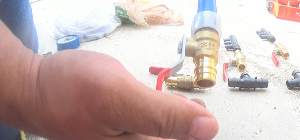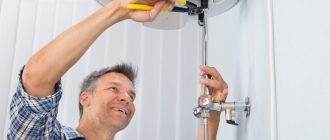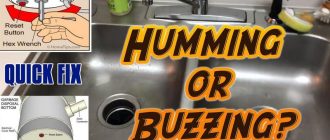What to Do When There’s No Water in the House
No water in the house can be a very frustrating situation to find yourself in. Whether it’s due to a plumbing issue, water main break, or another unforeseen circumstance, not having access to water can disrupt your daily routine and basic necessities. But don’t panic! There are several steps you can take to mitigate the problem and ensure you have the water you need to carry on with your day.
The first thing you should do when you notice there’s no water in the house is to check with your neighbors or local authorities to see if it’s a widespread issue. If it is, it might be a problem with the water supply in your area, and you’ll have to wait for it to be fixed. However, if it’s only affecting your house, then the issue may lie within your own plumbing system.
Next, you’ll want to check your main water valve to make sure it’s fully open. Sometimes, the valve can accidentally get turned off, cutting off the water supply to your house. If that’s the case, simply turn the valve counterclockwise to fully open it. This simple step might solve your problem and restore water to your house.
Check the Water Supply
If there is no water in the house, one of the first things you should do is to check the water supply. Here are some steps you can take to troubleshoot the issue:
- Check if the main water valve is open. Sometimes, the valve might have been accidentally turned off or closed, resulting in no water flow. Make sure it is fully open.
- Inspect the water meter to see if it indicates any unusual readings. If the meter shows that there is water being consumed, it could mean that there is a leak in the plumbing system.
- Contact your water provider to see if there are any known issues or maintenance work being carried out in your area. They may be able to provide you with information on when the water supply will be restored.
- If you have a private well, check the well pump and pressure tank. Ensure that they are functioning properly and that there is enough water in the well.
- Consider checking with your neighbors to see if they are also experiencing a water outage. If they are, it could indicate that the problem lies with the municipal water supply rather than your individual plumbing.
By following these steps, you can narrow down the cause of the no water in the house issue and determine whether it is something you can troubleshoot and fix yourself or if you need to seek professional help.
Inspect for Leaks
When there is no water in the house, one of the first things you should do is inspect for leaks. Leaks can occur in various places, such as the pipes, faucets, toilets, or water heater. Start by checking the visible pipes for any signs of leakage, such as dripping or puddles of water. If you notice any leaks, it is important to fix them as soon as possible to prevent further damage.
Next, check the faucets in your house. Turn them on and off to see if there is any water flow. If the faucets are not producing water, there may be a problem with the water supply or a leak in the pipes leading to the faucets.
Another area to inspect is the toilets. Flush the toilets to see if they are working properly. If there is no water or the water does not fill up, there may be a problem with the water supply to the toilets or a blockage in the pipes.
Lastly, check the water heater. Inspect the tank and connections for any signs of leaks. If there is water pooling around the water heater or if you notice any leaks, it is important to turn off the power supply to the water heater and contact a professional plumber for repairs.
Inspecting for leaks is crucial when there is no water in the house. By identifying and fixing any leaks, you can restore the water supply and prevent further damage to your home.
Resetting the Water Heater
If you suddenly have no water from your well, one of the first steps you can take is to reset your water heater. The water heater can sometimes lose its connection to the well and resetting it can help restore the water supply.
To reset the water heater, locate the power source and turn it off. This can usually be done by flipping a switch or turning a dial. Once the power is off, wait for a few minutes before turning it back on. This allows the water heater to reset itself and establish a connection with the well.
After turning the power back on, wait for a few minutes and then check if the water supply has been restored. If not, you may need to try other troubleshooting methods or contact a professional plumber for assistance.
Remember, resetting the water heater is just one of the steps you can take when there’s no water in the house. It’s important to also check other potential causes such as a power outage, a malfunctioning well pump, or a clogged water line. By systematically troubleshooting the issue, you can identify the source of the problem and take appropriate action to restore the water supply.
Open the Main Water Valve
If there is no water in the house, one of the first things you should check is the main water valve. This valve controls the water supply to your entire house and is usually located near the water meter.
To open the main water valve, you will need to turn it counterclockwise. Make sure to do this slowly and carefully to avoid causing any damage. Once the valve is fully open, water should start flowing back into your home.
If you are unsure about the location of the main water valve or how to operate it, consult your water provider or a professional plumber for guidance. They will be able to assist you in finding the valve and opening it correctly.
Remember, opening the main water valve is just one step in troubleshooting a lack of water in your house. If the issue persists, there could be other factors at play, such as a water leak or a problem with the water supply. It is important to address these issues as soon as possible to prevent further damage and inconvenience.
In conclusion, if there is no water in your house, open the main water valve to restore the water supply. If you are unsure how to do this, seek professional assistance.
Call a Professional Plumber
If you are experiencing a sudden lack of water in your house, especially if you get your water from a well, it is advisable to call a professional plumber. They are trained and equipped to handle various plumbing issues, including problems with well pumps or other components.
A professional plumber will be able to assess the situation and determine the cause of the water shortage. Whether it’s a problem with the well pump, pressure tank, or any other component, they have the expertise to identify and fix the issue.
Attempting to fix the problem yourself without proper knowledge and tools can lead to further damage or even injuries. It’s best to leave the job to a qualified professional who can ensure a proper and safe resolution.
When you call a professional plumber, they will arrive with the necessary tools and equipment to diagnose and repair the problem efficiently. They will have access to replacement parts, if needed, and can make sure everything is working correctly before they leave.
Remember, a sudden lack of water can be a sign of a more significant problem, so it’s essential to address it promptly. By hiring a professional plumber, you can have peace of mind knowing that your water supply will be restored and that any underlying issues will be taken care of.
Use Emergency Water Sources
If you find yourself in a situation where there is suddenly no water from the well, it is important to have alternative sources of water available. Here are some emergency water sources you can consider:
- Stored Water: It is always a good idea to have a supply of stored water in case of emergencies. Make sure to store water in clean, food-grade containers and rotate it regularly to ensure freshness.
- Rainwater: If it is raining, you can collect rainwater as an emergency water source. Set up buckets or barrels to catch rainwater, and make sure to filter and purify it before using it for drinking or cooking.
- Neighborhood Water Sources: In some cases, your neighbors might still have water. Check with them to see if you can temporarily use their water source, such as a hose or faucet, until the problem with your well is resolved.
- Streams or Rivers: If there are nearby streams or rivers, you can collect water from them as a last resort. However, be cautious and avoid water that is visibly contaminated or polluted.
- Emergency Water Supplies: In certain emergencies, authorities may distribute emergency water supplies. Listen for announcements or check with local authorities to see if there are any designated water distribution points in your area.
Remember, when using any emergency water sources, it is essential to purify and filter the water before using it for drinking or cooking. Boiling, using water purification tablets, or using a water filtration system can help remove harmful bacteria and ensure the water is safe to consume.
Collect Rainwater
If you suddenly have no water from your well, one option to consider is collecting rainwater. This can be done by setting up rain barrels or a rainwater harvesting system. Rainwater is a free and sustainable source of water that can be used for various household needs.
To collect rainwater, place large containers or barrels outside your house to catch rainwater as it falls. Ensure that the containers have tight-fitting lids to prevent debris, insects, and animals from contaminating the water. You can position the containers under a downspout or use a gutter system to direct the rainwater into the collection containers.
It’s important to note that rainwater is not suitable for drinking without proper filtration or treatment. However, it can be used for activities such as watering plants, washing clothes or dishes, flushing toilets, and cleaning. Be sure to use rainwater responsibly and avoid wasting it.
Collecting rainwater not only provides an alternative source of water when your well is not functioning but also helps reduce your reliance on municipal water supplies. It is a practical and environmentally friendly solution that can help you manage water shortages in your home.
Emergency Water Purification
In a situation where there is suddenly no water from the well, it is important to have a plan in place for emergency water purification. Access to clean and safe drinking water is essential for survival.
Boiling:
One of the most effective methods of water purification is boiling. Boiling water for at least one minute will kill most types of bacteria, viruses, and parasites that may be present. It is important to let the water cool before consuming.
Water Disinfection Tablets:
If boiling water is not an option, water disinfection tablets can be used to kill harmful microorganisms. Follow the instructions on the packaging to ensure proper disinfection.
Emergency Water Filters:
An emergency water filter can be used to remove impurities and contaminants from water sources such as rivers, lakes, or ponds. These filters generally use activated carbon and microfilters to remove bacteria, protozoa, and other harmful substances.
Water Purification Kits:
Consider investing in a water purification kit that includes a combination of filters, treatment chemicals, and UV sterilization. These kits are compact and portable, making them ideal for emergency situations.
Collecting Rainwater:
In the absence of well water, collecting rainwater can be a valuable source of clean water. Use clean containers to collect rainwater and boil it or use water disinfection tablets to make it safe for consumption.
Emergency water purification is a critical skill to have in the event of a sudden water shortage. It is important to be prepared with the necessary tools and knowledge to ensure access to clean and safe drinking water.
Temporary Water Storage
If you suddenly have no water from your well, it is essential to have a temporary water storage plan in place. This will ensure that you have access to water for essential daily tasks until the issue is resolved.
A great option for temporary water storage is using large water containers or barrels. These containers can typically hold a significant amount of water and are portable, allowing you to easily move them around your home as needed.
Here is a simple table that outlines the steps for setting up temporary water storage:
| 1 | Purchase large water containers or barrels |
| 2 | Clean and sanitize the containers thoroughly |
| 3 | Fill the containers with water from an alternative source (such as a neighbor’s well or a local water supply) |
| 4 | Place the containers in a safe and easily accessible location within your home |
| 5 | Use the stored water for essential tasks like drinking, cooking, and personal hygiene |
| 6 | Monitor the water level and refill as needed |
Remember, it is important to store water only for essential purposes during this temporary period. Once your well is back in working order, make sure to properly dispose of the stored water and clean the containers for future use.
By setting up temporary water storage, you can ensure that you have access to water during unexpected disruptions and maintain a sense of normalcy in your daily routine.
Notify the Water Company
If you suddenly find that there is no water coming from your well, it is important to notify the water company as soon as possible. The water company will be able to investigate the issue and provide you with information on any potential problems or disruptions in the water supply.
Contacting the water company should be your first step when you experience a sudden loss of water. They will have the necessary resources and expertise to diagnose the problem and take the appropriate steps to restore the water supply.
When you reach out to the water company, be prepared to provide them with specific details about the situation. This can include the date and time when you first noticed the lack of water, any unusual noises or behaviors from the well, and any other relevant information that might help them in their investigation.
While waiting for the water company’s response, it is advisable to conserve any remaining water in your household. Use it wisely and only for essential tasks such as drinking, cooking, and hygiene.
| Contact the water company immediately. |
| Provide specific details about the situation. |
| Follow any instructions given by the water company. |
| Conserve any remaining water in your household. |
Communicate with Neighbors
When there is no water in the house, it is important to communicate with your neighbors. They might be experiencing the same issue or have information on why there is no water in the area. This can be done by talking to them in person, leaving a note at their door, or reaching out through community social media groups.
By communicating with your neighbors, you can gather valuable information about the water situation, such as whether the supply is expected to be restored soon or if there is a need to call a plumber. It is also possible that your neighbors have found alternative solutions and can provide advice on how to cope with the lack of water.
Furthermore, by working together with your neighbors, you can establish a sense of community and support during this challenging time. You can share resources, such as water containers or portable showers, and help each other in finding temporary solutions until the water supply is restored.
Remember, in times of no water in the house, communication with neighbors can be a valuable asset in gathering information, finding solutions, and creating a sense of community.
Plan for Future Water Shortages
Experiencing a period with no water in the house can be a stressful situation. To avoid such inconveniences in the future, it is important to plan ahead and prepare for potential water shortages. Here are some essential tips to help you plan for future water scarcity:
| 1. Install Water Storage Tanks | Consider installing water storage tanks on your property to collect and store rainwater. This can serve as a backup water supply during times of shortage. |
| 2. Practice Water Conservation | Develop good water conservation habits by fixing any leakages, using water-efficient appliances, and taking shorter showers. Conserving water on a daily basis can help minimize the impact of future water shortages. |
| 3. Educate Yourself | Stay informed about your local water resources and any potential water scarcity issues in your area. Understanding the water supply and demand dynamics will enable you to make informed decisions and take necessary actions. |
| 4. Diversify Water Sources | Explore alternative water sources such as wells, rainwater harvesting systems, or even water deliveries. Having multiple sources of water can help to mitigate the impact of any one source running dry. |
| 5. Store Emergency Water | In addition to water storage tanks, it is also wise to keep emergency water supplies at home. Store enough water to last your household for at least three days in case of an unexpected water shortage. |
| 6. Prepare an Emergency Plan | Create an emergency plan that outlines the steps to take in the event of a water shortage or disruption. This plan should include contact information for water authorities, local resources, and alternative water suppliers. |
By implementing these measures, you can ensure that you are better prepared for future water shortages and minimize the impact of no water in the house. Remember, planning and proactive actions are key to dealing with water scarcity effectively.
Question-answer:
What are some common reasons for not having water in the house?
There can be several reasons for not having water in the house, including water main breakages, power outages affecting the water pump, plumbing issues or leaks, frozen pipes, or maintenance work in the area.
What should I do first if there’s no water in my house?
If there’s no water in your house, the first thing you should do is to check if the issue is isolated to your house or if it affects the entire neighborhood. You can call your neighbors or check with the local water department to gather more information.
How can I find out if there’s a water main breakage in my area?
If you suspect a water main breakage in your area, you can call the local water department or check their website or social media pages for any announcements or updates regarding water outages or repairs. They usually provide information about the affected areas.
What should I do if there’s a power outage affecting my water pump?
If there’s a power outage affecting your water pump, you can try to reset the breaker or check the fuse box to see if the circuit has tripped. If that doesn’t work, you may need to wait for the power to be restored or consider using alternative water sources temporarily.
What should I do if there’s a plumbing issue or leak causing the water shortage?
If you suspect a plumbing issue or leak causing the water shortage, you can turn off the main water supply valve to prevent further water loss. It’s advisable to contact a plumber to assess and fix the issue as soon as possible.





